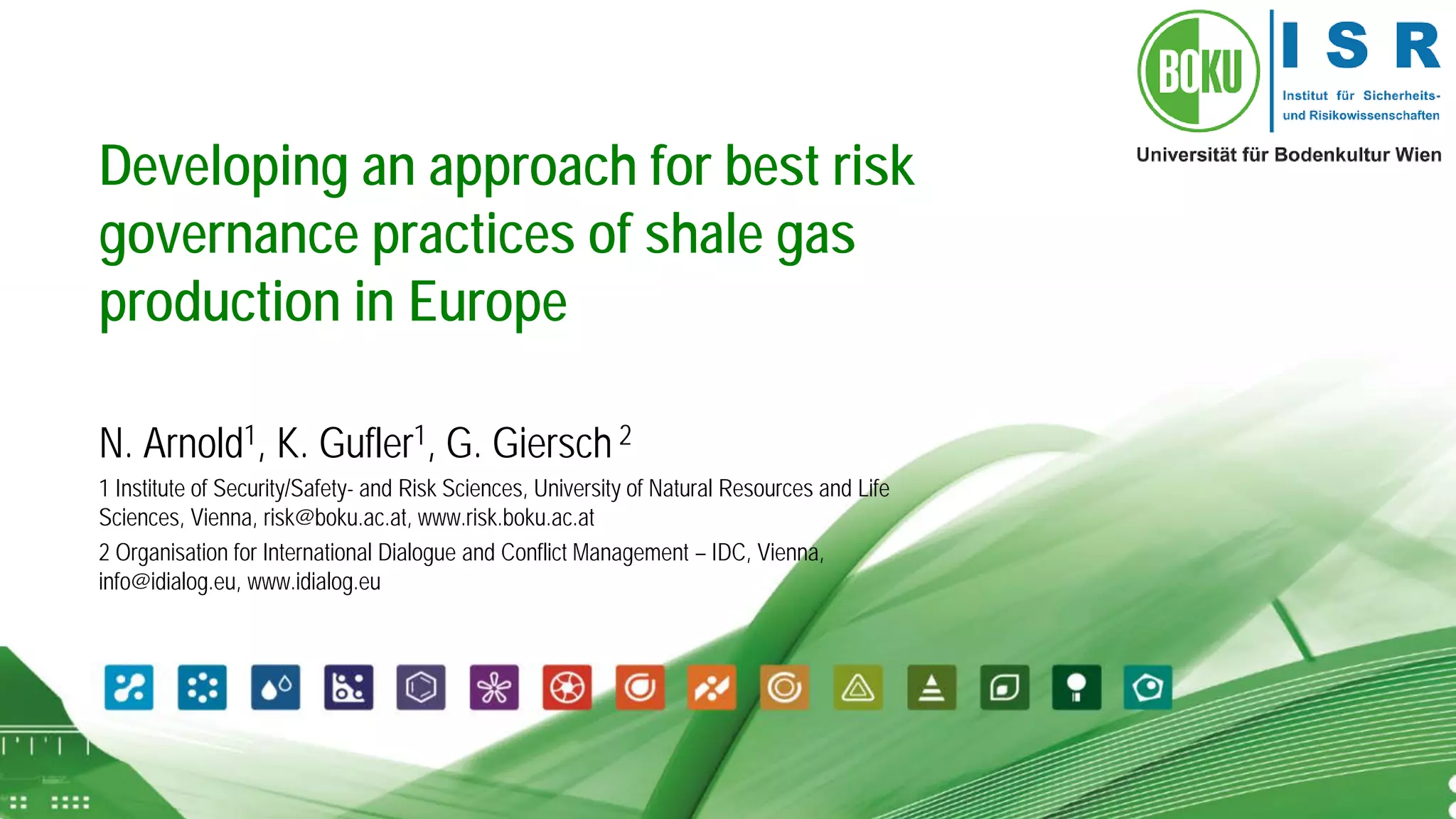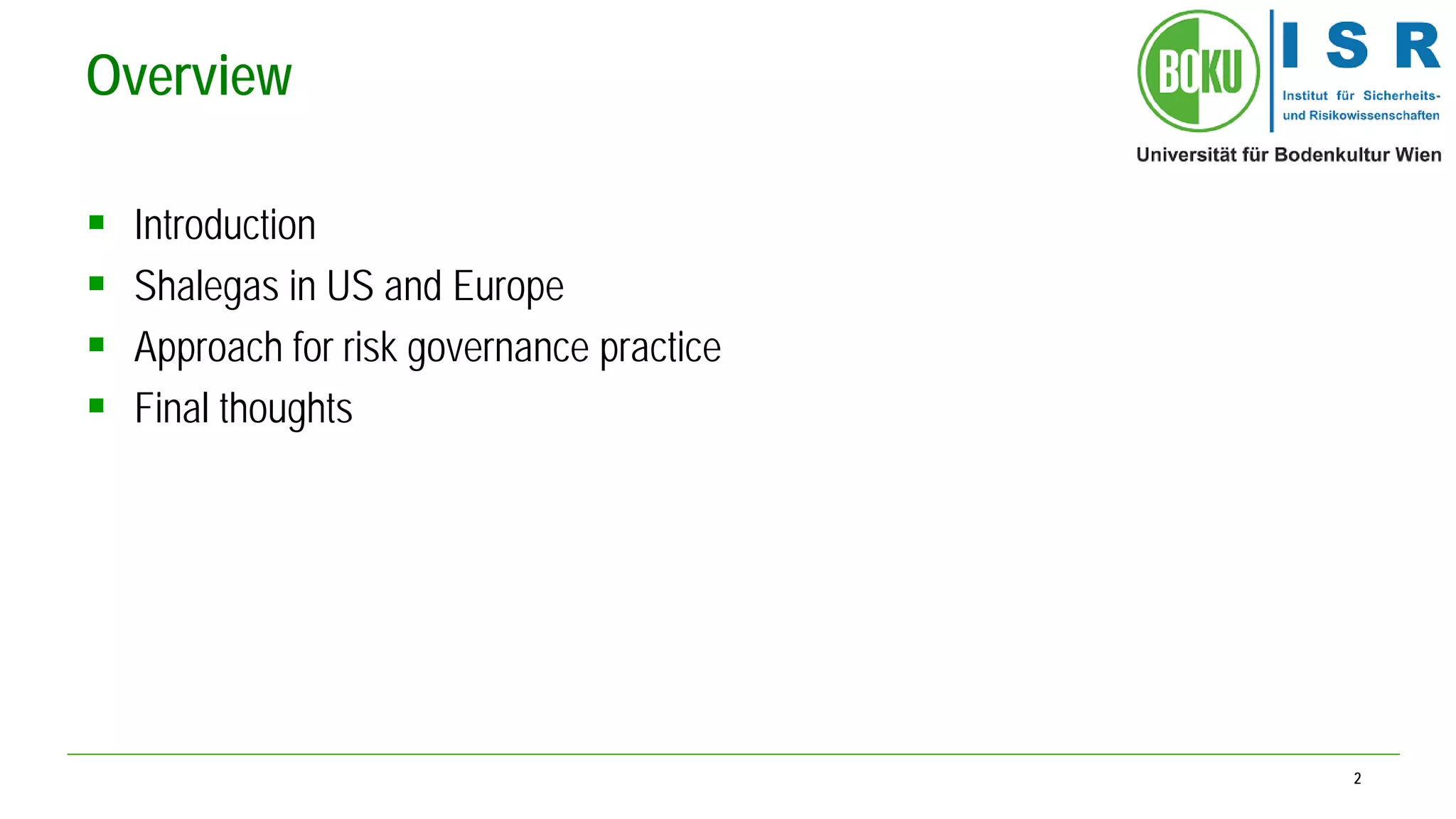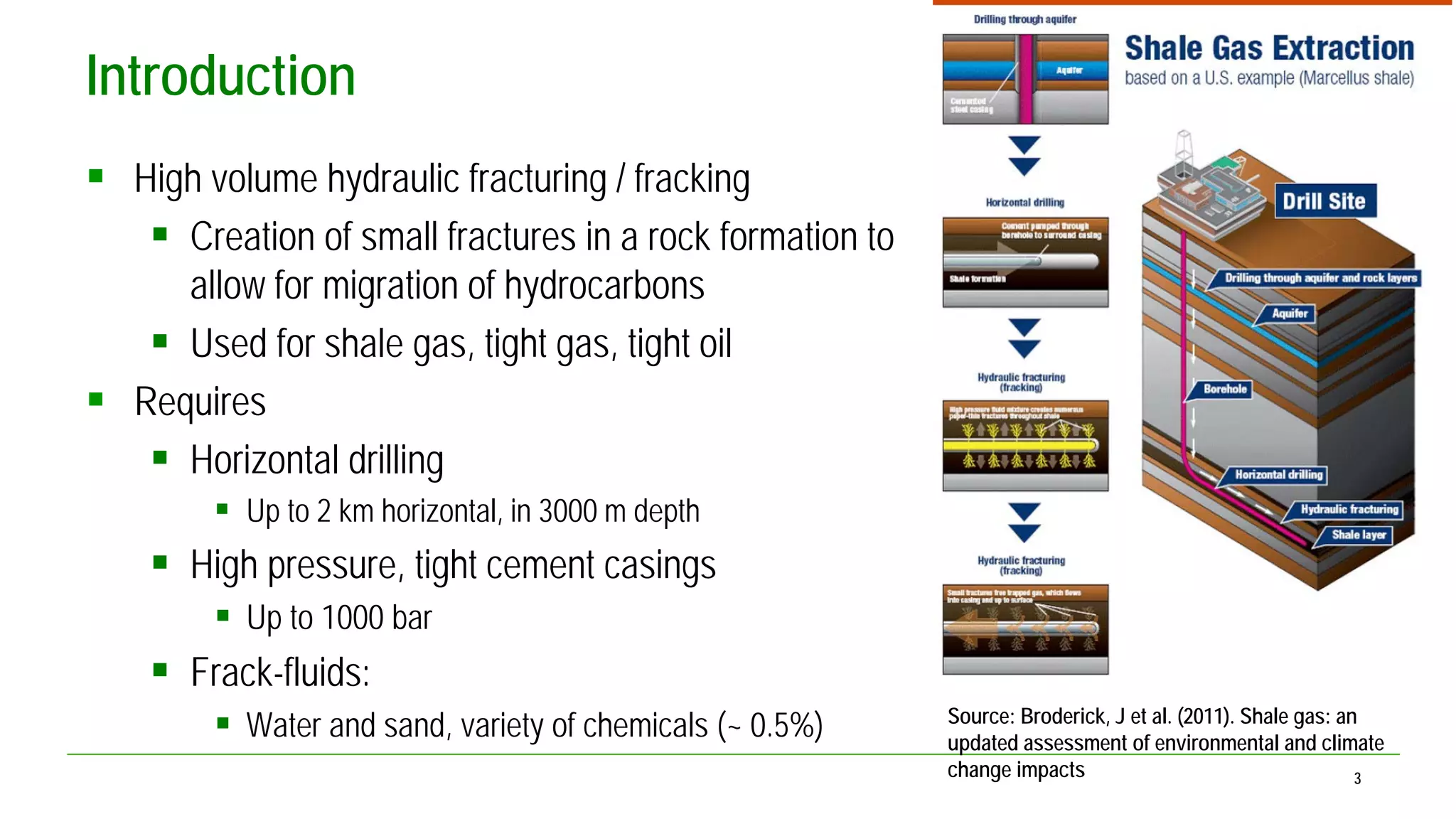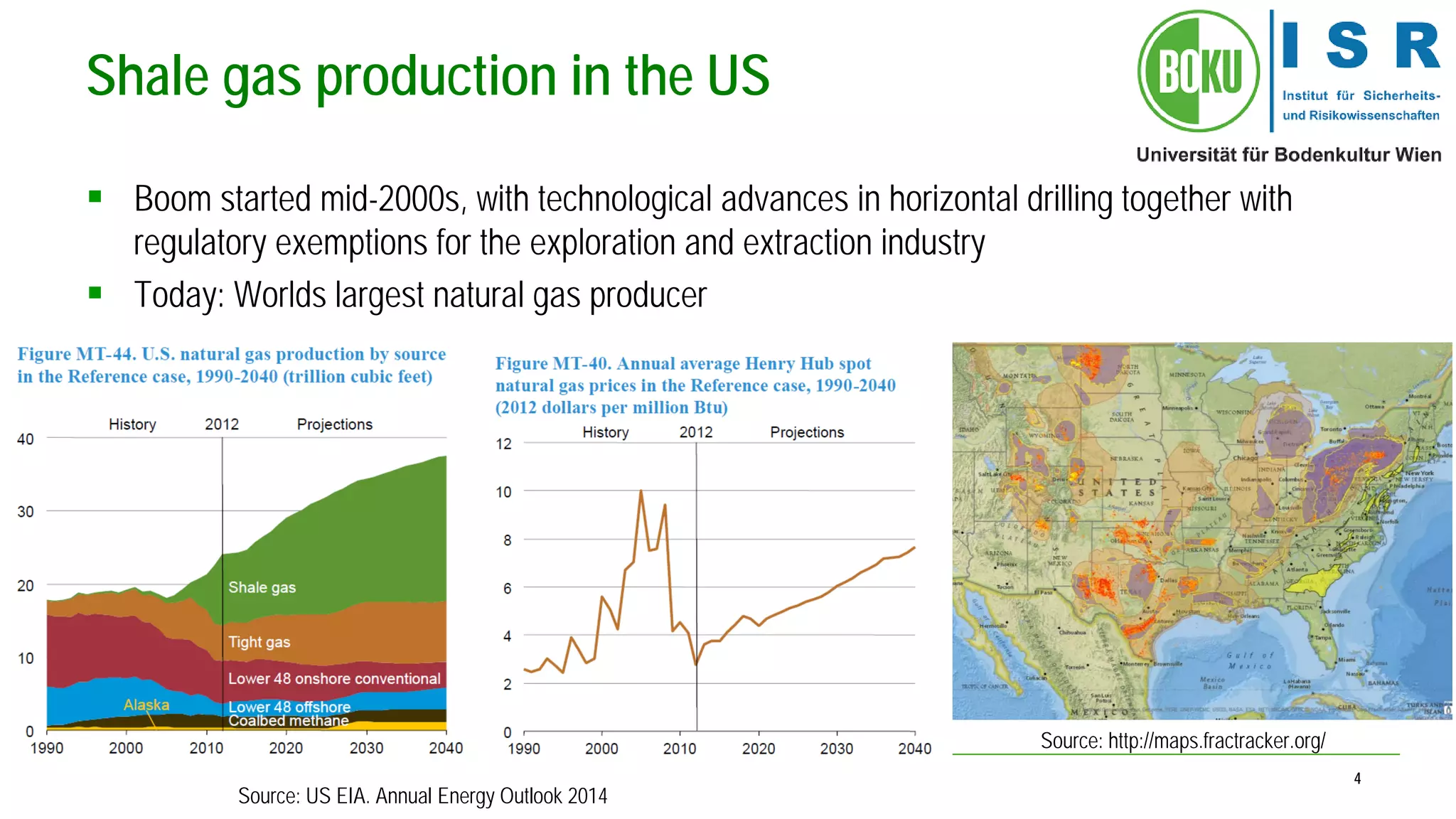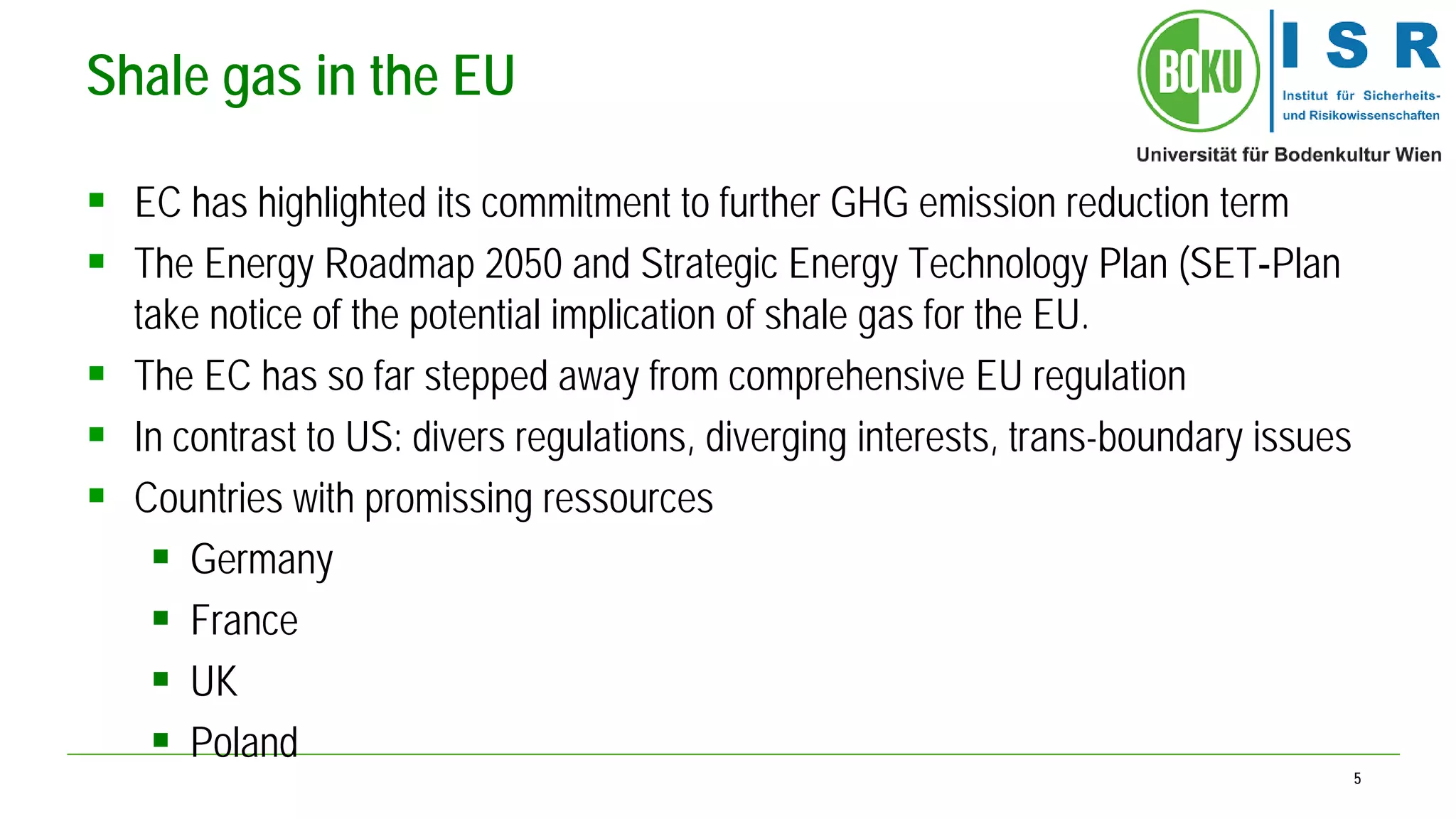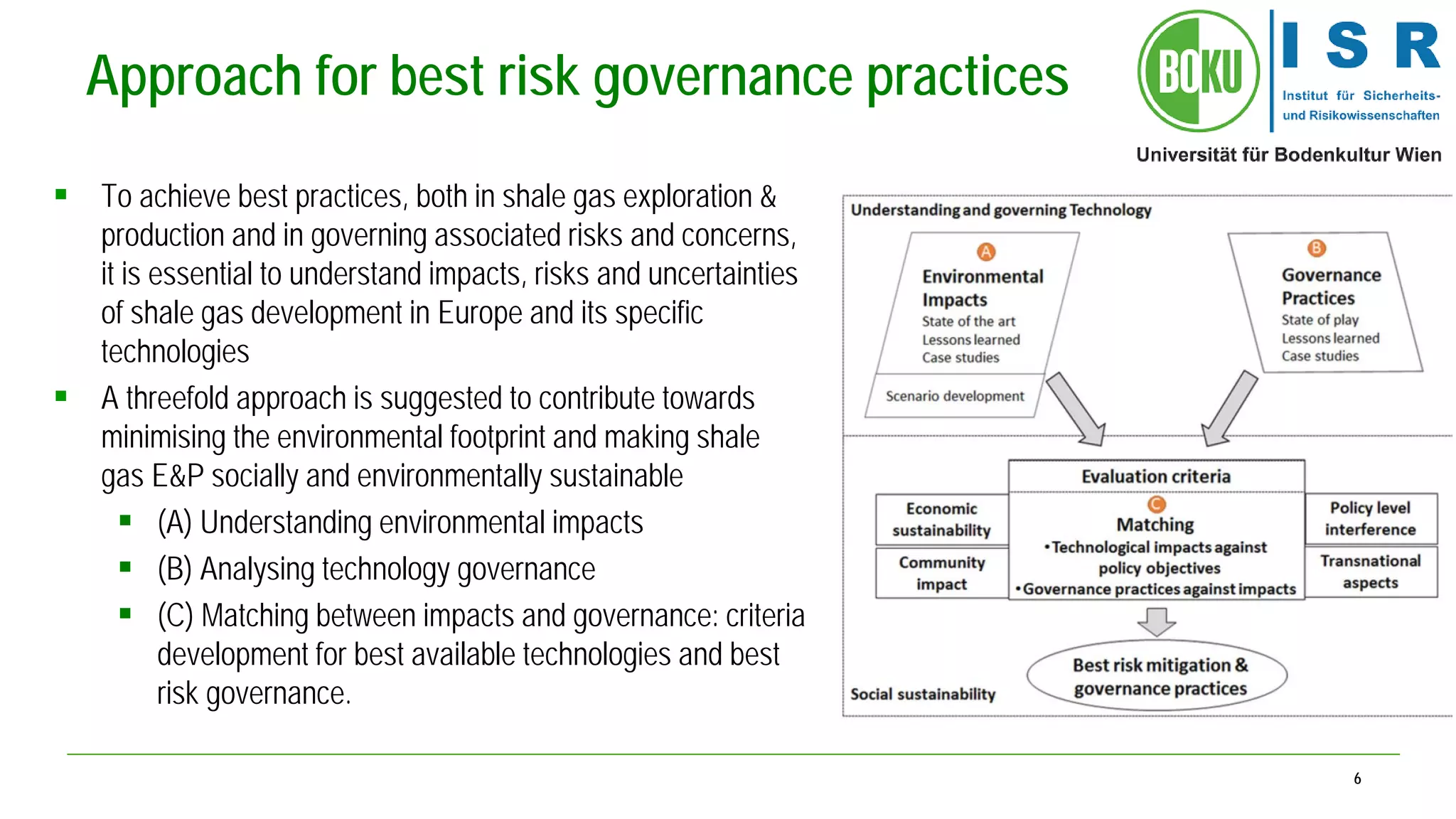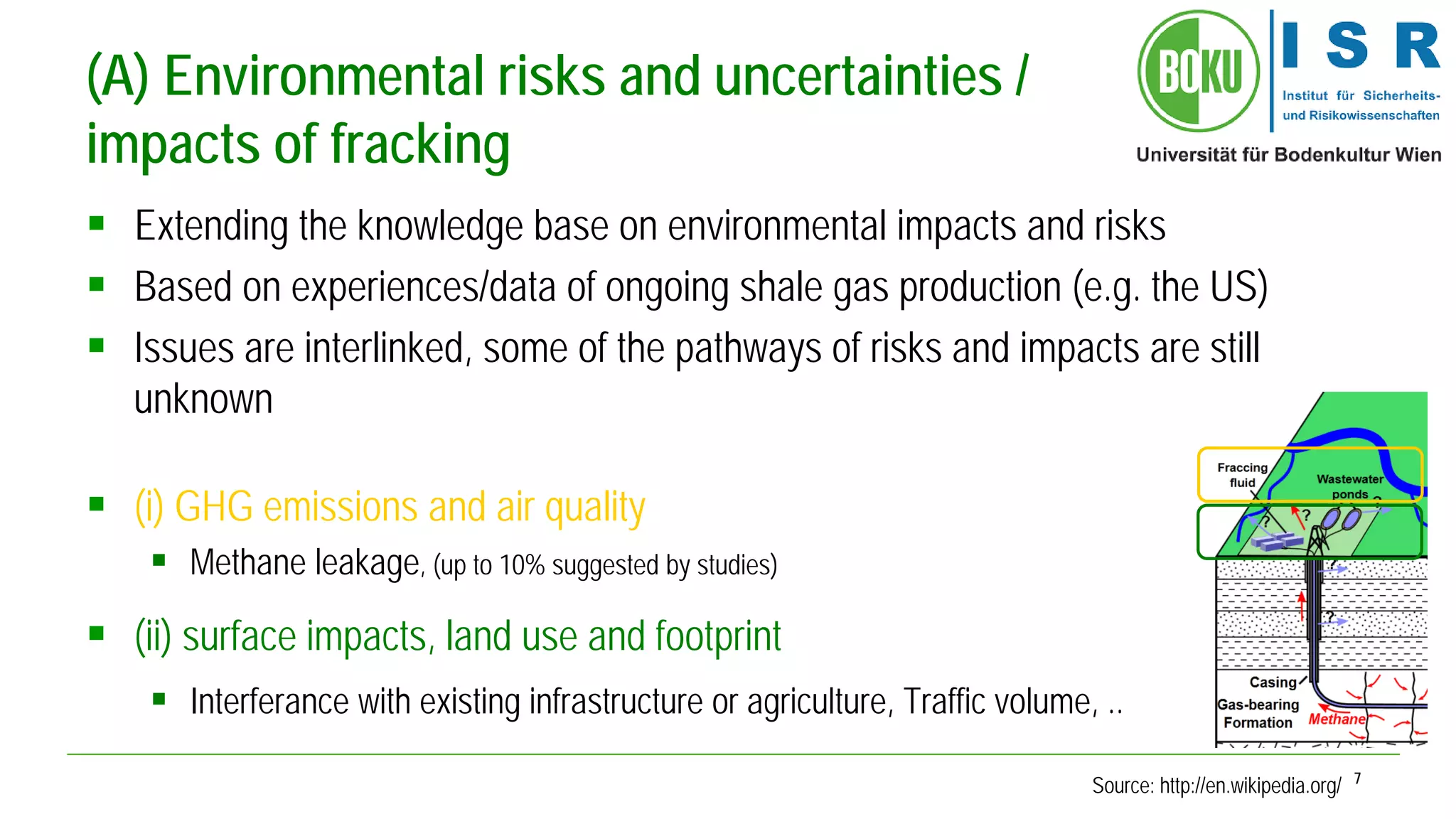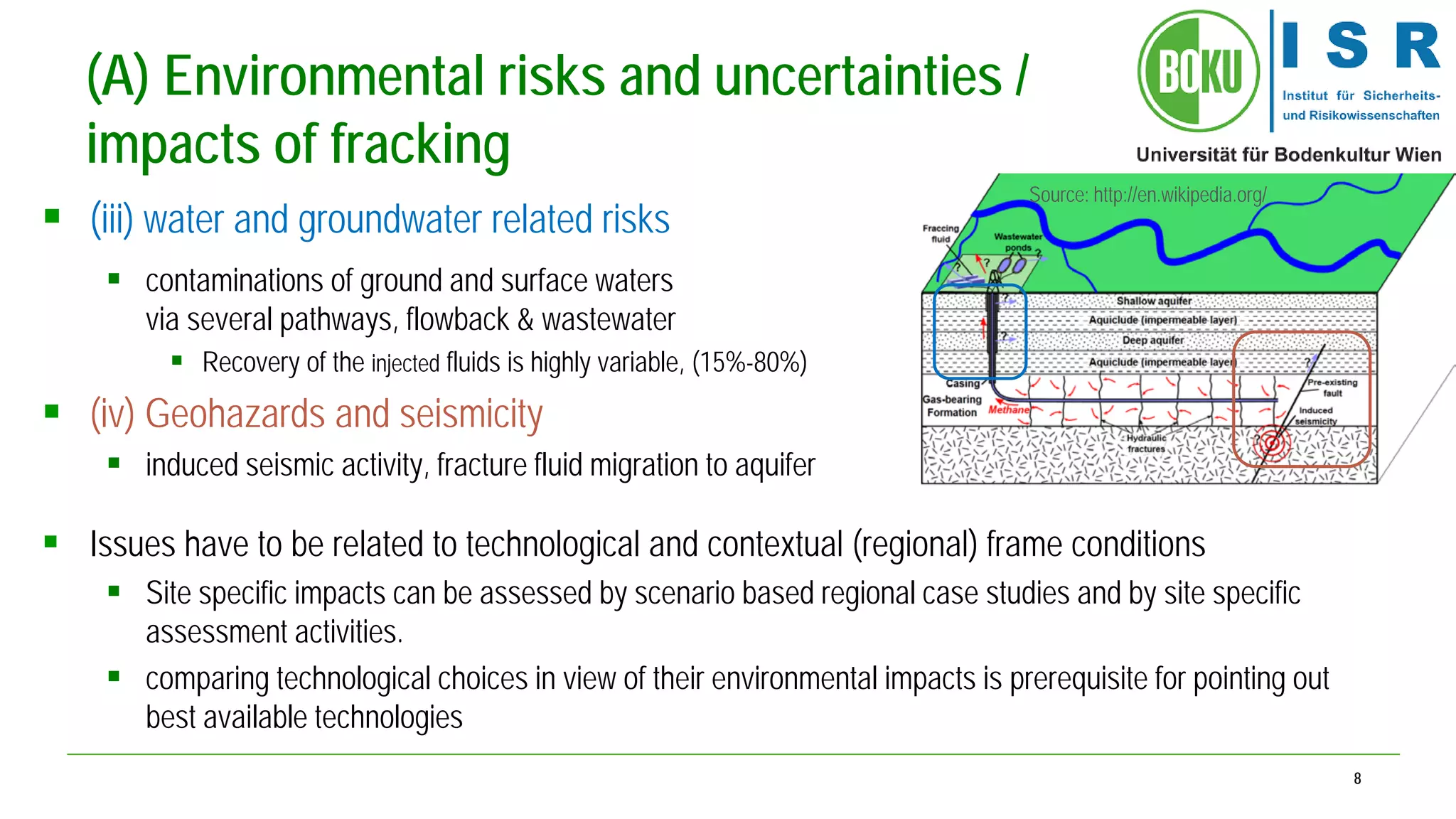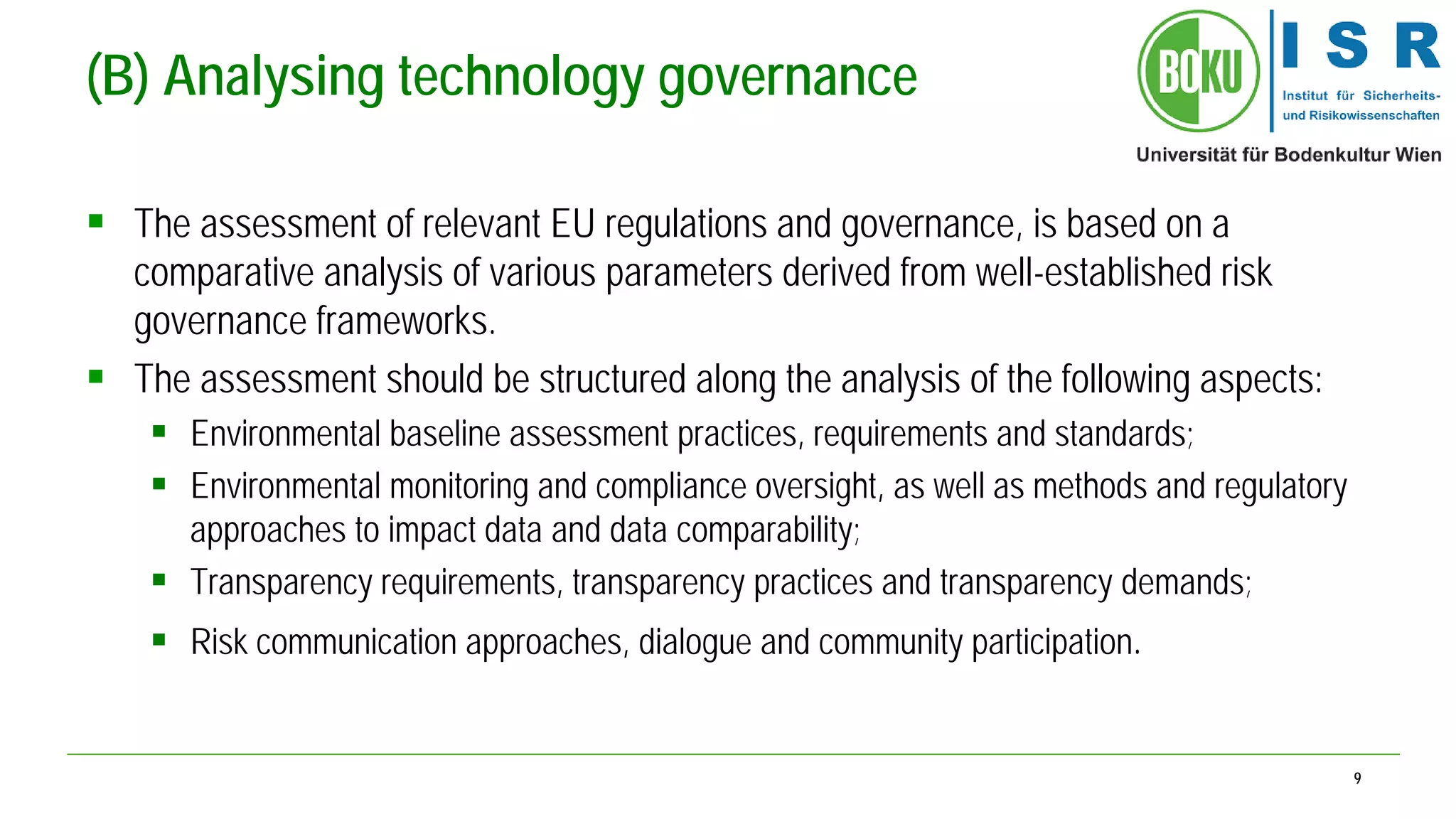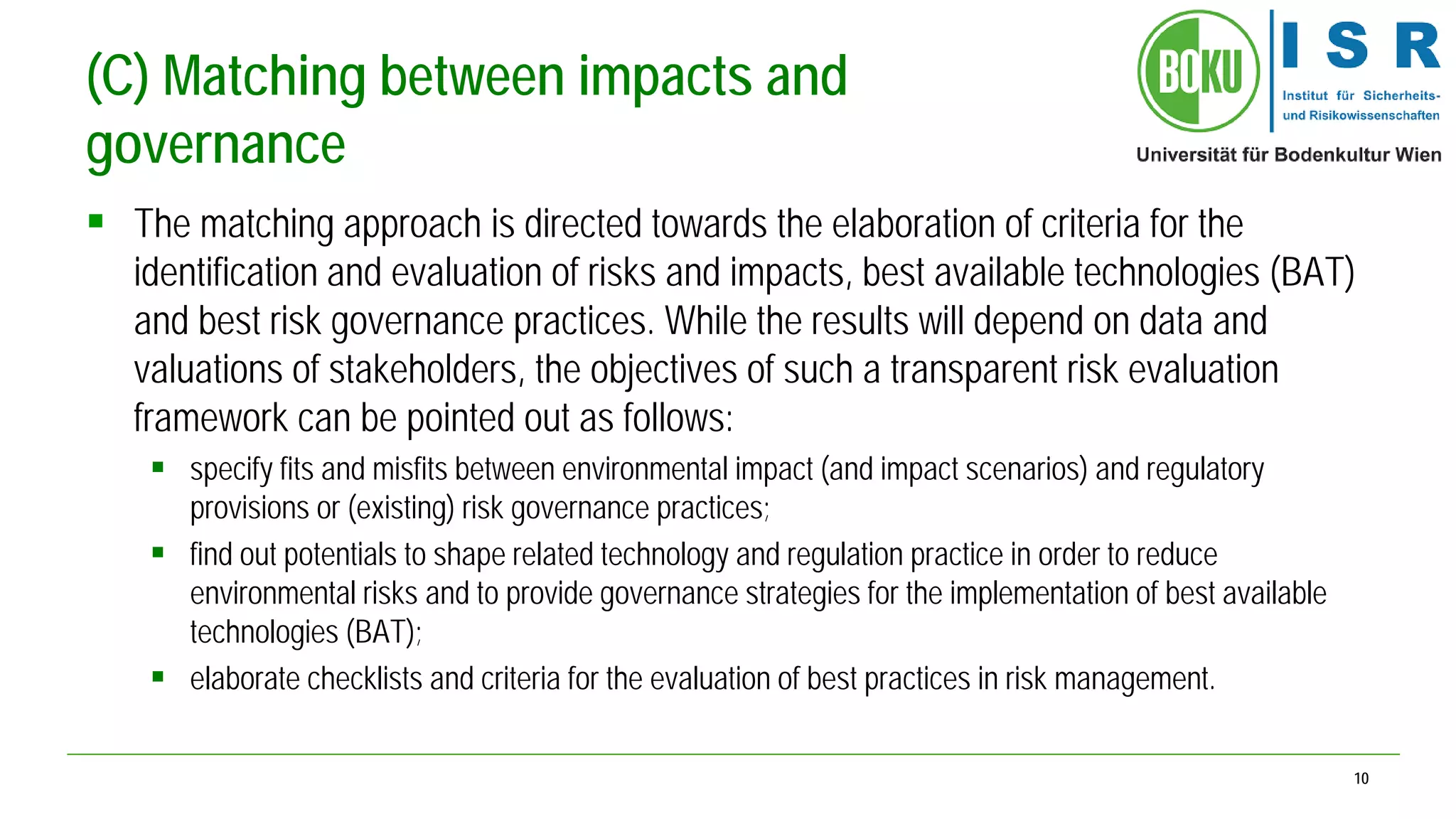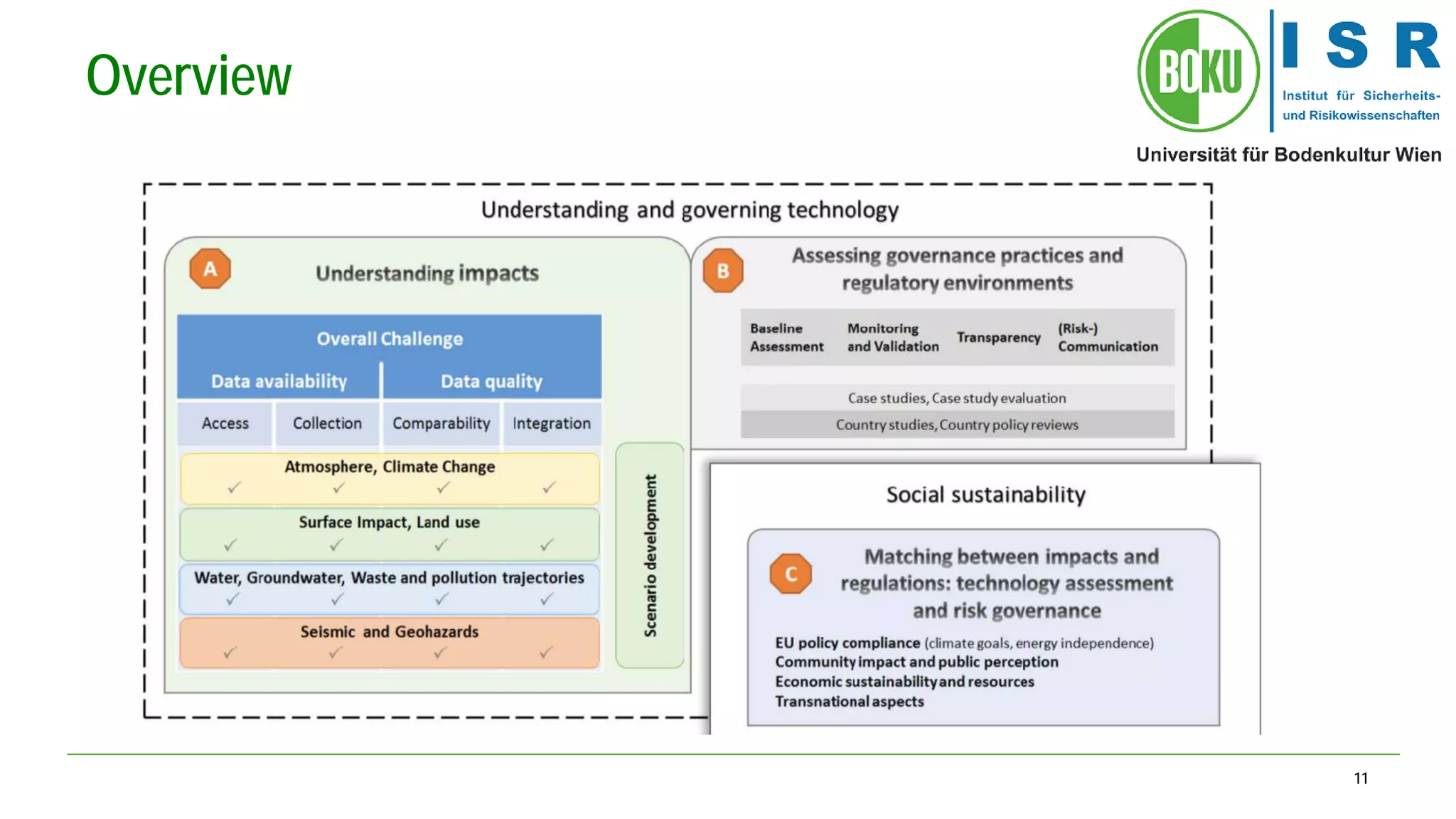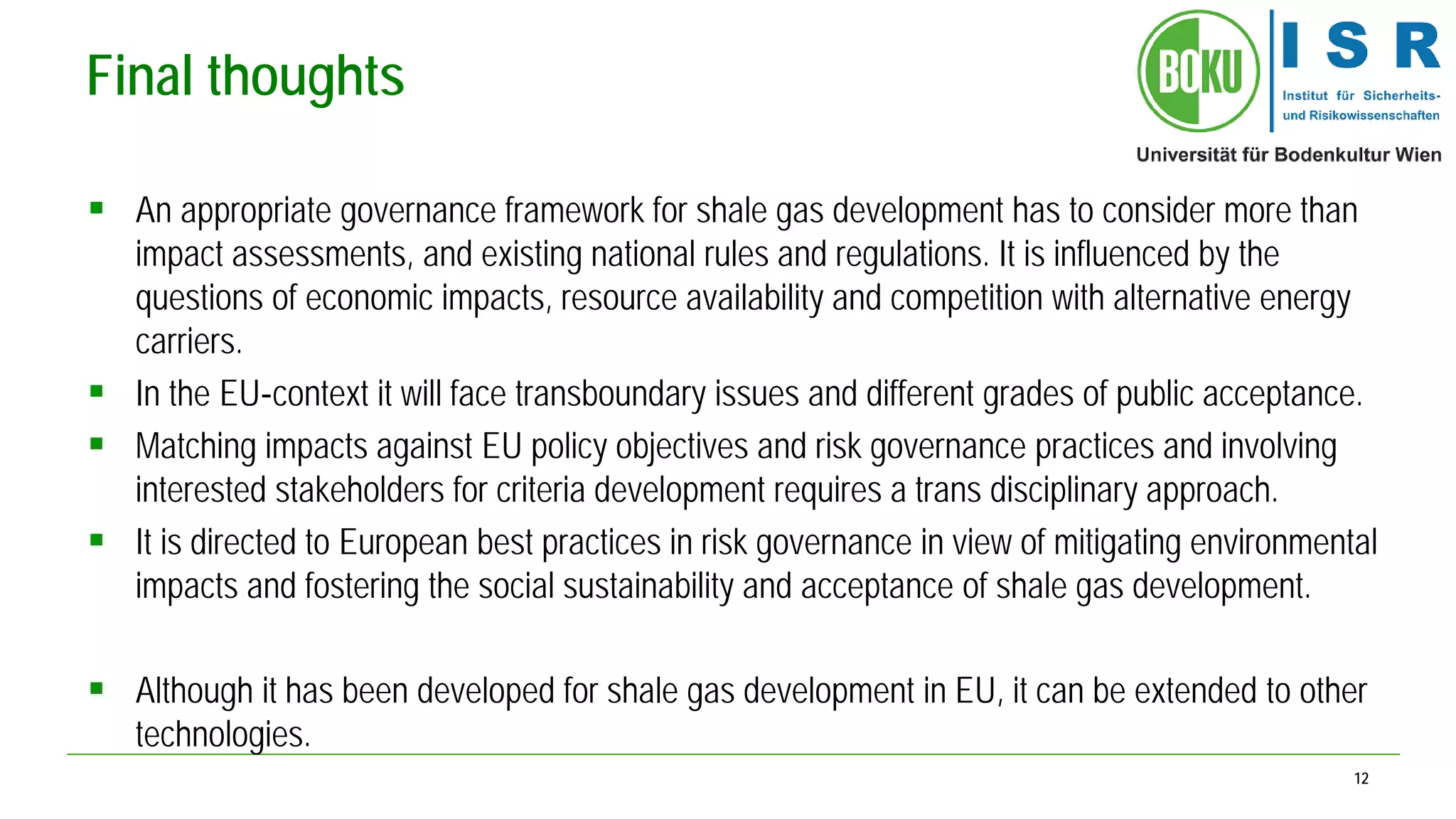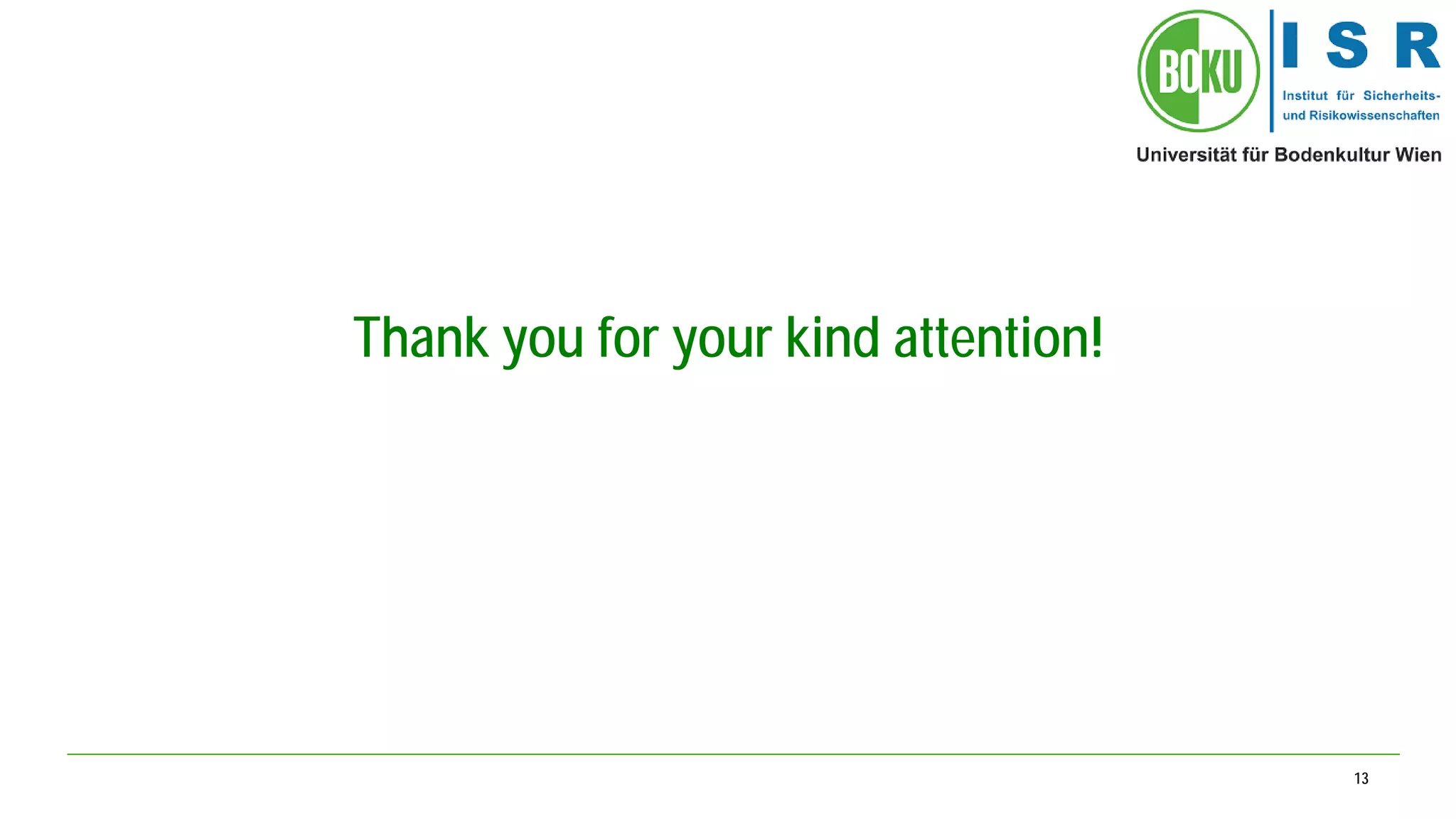The document discusses the development of best risk governance practices for shale gas production in Europe, highlighting the differences between the European and U.S. approaches. It suggests a threefold strategy focusing on understanding environmental impacts, analyzing technology governance, and matching impacts with governance to minimize ecological footprints. The final thoughts emphasize the need for a comprehensive governance framework that addresses economic, environmental, and public acceptance issues in shale gas development.
